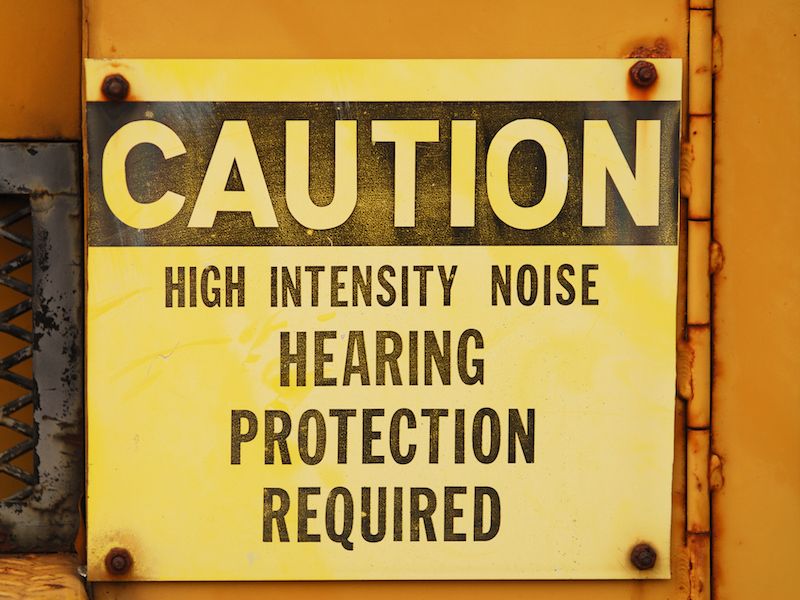
It’s one thing to know that you need to safeguard your hearing. Recognizing when to safeguard your ears is another matter. It’s more challenging than, for example, recognizing when you need sunscreen. (Are you going to go outside? Is the sun out? You need to be using sunblock.) Even recognizing when you need eye protection is easier (Working with dangerous chemicals? Doing some construction? You need to wear eye protection).
It can feel as though there’s a significant grey area when addressing when to wear hearing protection, and that can be risky. Often, we’ll defer to our natural inclination to avoid hearing protection unless we’re given information that a specific place or activity is hazardous.
A Tale of Risk Assessment
In general, we’re not very good at assessing risk, especially when it comes to something as intangible as permanent hearing damage or loss of hearing. To demonstrate the situation, here are some examples:
- A very loud rock concert is attended by person A. 3 hours is approximately the length of the concert.
- A landscaping business is run by person B. After mowing lawns all day, she goes home and quietly reads a book.
- Person C is an office worker.
You might presume that person A (let’s call her Ann, to be a little less clinical) may be in more hearing danger. Ann leaves the show with her ears ringing, and she’ll spend the majority of the next day, trying to hear herself talk. Assuming Ann’s activity was dangerous to her ears would be reasonable.
The noise that person B (let’s just call her Betty), is exposed to is not as loud. Her ears don’t ring. So it must be safer for her ears, right? Well, not exactly. Because Betty is mowing every day. The truth is, the damage builds up a little bit at a time even though they don’t ring out. If experienced every day, even moderately loud noises can have a damaging affect on your ears.
Person C (let’s call her Chris) is even less clear. Lawnmowers come with instructions that emphasize the hazards of ongoing exposure to noise. But even though Chris has a relatively quiet job, her long morning commute through the city each day is fairly loud. In addition, she sits behind her desk and listens to music through earbuds. Does she need to think about protection?
When is it Time to be Concerned About Protecting Your Hearing?
Normally, you should turn down the volume if you have to raise your voice to be heard. And you need to consider wearing earmuffs or earplugs if your surroundings are that noisy.
If you want to think about this a bit more clinically, you need to use 85dB as your cutoff. Noises above 85dB have the capacity, over time, to result in damage, so in those scenarios, you should think about wearing ear protection.
Most hearing professionals suggest getting a special app to monitor decibel levels so you will be cognizant of when the 85dB has been reached. These apps can let you know when the ambient noise is getting close to a harmful level, and you can take appropriate steps.
A Few Examples
Your phone may not be with you anywhere you go even if you do download the app. So a few examples of when to protect your ears may help you develop a good standard. Here we go:
- Using Power Tools: You recognize that working all day at your factory job will call for ear protection. But what if you’re simply puttering around your garage all day? Most hearing specialists will suggest you use hearing protection when operating power tools, even if it’s only on a hobbyist basis.
- Commuting and Driving: Spending all day as an Uber or Lyft driver? Or perhaps you’re taking the subway after waiting for a little while downtown. The noise of living in the city is bad enough for your ears, not to mention the extra injury caused by cranking up your tunes to drown out the city noise.
- Listening to music with earbuds. This one calls for caution, not protection. Give consideration to how loud the music is, how long you’re listening to it, and whether it’s going directly into your ears. Noise-canceling headphones are a smart choice to prevent needing to turn the volume way up.
- Domestic Chores: We already talked about how something as straightforward as mowing the lawn, when done frequently, can call for hearing protection. Chores, such as mowing, are probably something you don’t even think about, but they can result in hearing damage.
- Exercise: You know your morning cycling class? Or even your evening workout session? Each of these examples may call for ear protection. The loud volume from trainers who use loud music and microphones for motivation, though it may be good for your heart rate, can be bad for your hearing.
A strong baseline might be researched by these examples. When in doubt, though, you should defer to protection. Rather than leaving your ears exposed to future damage, in most circumstances, it’s better to protect your hearing. Protect today, hear tomorrow.
